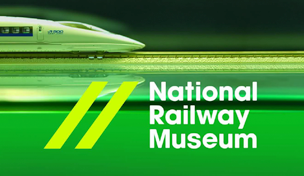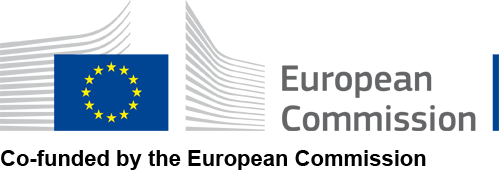Want full & instant access to shape?
To access the full benefits of shape you need to register for FREE
 Register NowAlready registered? Log in here
Register NowAlready registered? Log in here

Welcome to the Shape online resource. This is a quick guide to the features and unique navigation of Shape
Show me how to use Shape SkipWant full & instant access to shape?
To access the full benefits of shape you need to register for FREE
 Register NowAlready registered? Log in here
Register NowAlready registered? Log in here
Report
The REPORT stage is a post-implementation audit of the project delivery and the process leading up to it, this also means that the recorded processes and experiences of delivering your solution can provide invaluable insights for future projects. There is also support and guidance on how to capture and report valuable insights if your project is terminated early.
Report
This stage will cover:
- The role and value of an audit
- Measurement
- Team debrief
- Communications
- Early stop procedure
The role and value of an audit
An audit will allow you to review the completed project and capture key data, including:
- Its effectiveness
- The project process
- Internal and external communications about the project process
- The project outcomes
- The benefits for all stakeholders
Sometimes projects can end for reasons other than completion, for example:
- Budget reallocation
- The process or outside influences have resulted in a change in the project’s justification
- A senior/political sponsor has changed and the project has been cancelled
It can be upsetting for all participants, especially the project leader, when a project ends early, but your work can still be valuable for setting up and managing future projects. You also need to inform your internal and external stakeholders and contributors about the project closure, the reasons behind it and what, if anything, will happen in future.
Resist the temptation to close the file and walk away. Take time to document the project and capture the data you’ve gathered so far.
The audit checklist will provide data and evidence for all the project stakeholders:
- Sponsors
- Budget holders
- Team members
- Potential users
- Customers
Measurement
It is vital that the value of a successful project is properly demonstrable to show that the budget has been spent responsibly and usefully.
Design can add value to any solution when applied correctly, but there’s a common misconception it can’t be measured. Value can be demonstrated in areas such as:
- Improved knowledge
- Improved performance
- Cost savings
- Other efficiencies
To measure the impact of your project outcomes you need to compare the data collected after the project launch and subsequent monitoring observations against the start value based on the situation prior to your project implementation, covered in the Objectives step of the Identify stage.
In this context, you are measuring the overall impact of your project outcomes, not just the value of the design activities.
Your measurement parameters were explored and set up during the Objectives step of the Identify stage. These should be specific to your work, customer environment and project deliverables, but there are also common themes that can be a useful reference.
> The Measurement tool, available in the tools menu, can provide you with further information on measuring success/design effectiveness.
Team debrief
Whether you have used the Shape process in whole or in part, bring the internal and external project team and suppliers together to thoroughly and methodically review the project, noting specific successes and challenges encountered along the process.
Allow all team members the opportunity to offer comments and areas for improvement.
During the meeting, work through your project plan and the process step by step, reviewing:
- Approach
- Anticipated outcomes
- Actual outcomes
- The process itself
Make sure that this review doesn’t become an exercise in assigning blame for things that didn’t go well.
- Be positive about successes
- Be realistic about limitations
- Make constructive notes for future improvements
Devise a way of sharing the outcomes with your colleagues who were not involved in the project. This can be in digital or physical format shared with individuals or displayed in a common area.
Communications
Although the project might be complete in terms of outcomes, the stakeholders and contributors must be informed that the:
- Objectives have been met
- Project was within budget
- End-users are satisfied
The evidence for this should have been captured during the Monitoring step of the Apply stage.
If the project is completed as described in the project plan, all that remains is to fully implement your communications strategy from the Project Plan step of the Plan stage.
Early stop procedure
Communicating the completion of a successful project can be very rewarding, but it’s a lot more challenging if a project has stopped early. This is when good communication becomes invaluable.
If your project has stopped before completion you can be guided by using a combination of your communication strategy (if you produced one) from Project Plan step of the Plan stage, and the stakeholder mapping from the Stakeholders step of the Identify stage.
- 1Work with the decision maker to understand why the project stopped
- Agree an accurate form of wording for the communication
- Re-assess your stakeholder-map, including the project team; prioritise the order and appropriate method of communication for each group. This could include:
- Face to face
- Letters, phone calls, e-mails, texts
- Website, blog or other social media
- Press releases, direct mails
- Any suitable combination
- Act quickly with forethought and planning so that you are ahead of the curve, but do not act in haste.
Depending on the stage at which the project was cancelled, make sure you capture any lessons learned and make them visible in your project files so that they can be easily referred to in future.
These could include:
- Insights into user requirements
- Ideas, concepts or prototypes that could contribute to, or become projects
- Insights on suppliers, costs, timings or other practical information
You could also develop a digital or physical ideas/insights library for reference in other projects.
When a project has been terminated early through no fault of the team, you should review it and publish its successes. These could include:
- New ways of working together
- Insights into real user needs
- Prototypes of new concepts that could inform new projects
There will always be new projects that need management and leadership; they might need new suppliers, or ways of working. Take the strengths from your project process and team and use them positively in your future.
Case Study 

Project Title
Increasing Museum Visitor Numbers
Client
Science Museum Group
Design Suppliers
Thompson Brand Partners, Leeds, UK
Launch Date
2010/2011
The National Railway Museum has been based at its current site in York, UK since 1975 and is the largest railway museum in the world. However, visitor numbers has been falling since 2006. Rail enthusiasts were making up an increasingly high proportion of visitors with family visits reducing alarmingly. The objective of the project was to rebrand the museum with the aim of driving visitor numbers (both online and physical) and to grow revenue.
View all Case Studies and ToolsRead More






